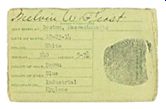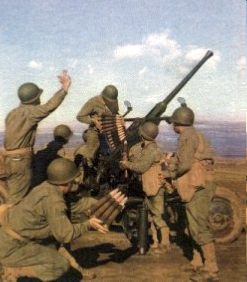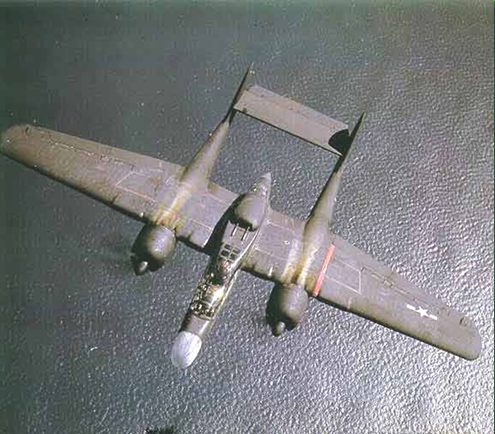 Grifon Incorporated
Grifon Incorporated
Postal Address: 566 Old Spofford Rd., Winchester NH 03470
Phone: (603) 686-
 Grifon Incorporated
Grifon Incorporated
Postal Address: 566 Old Spofford Rd., Winchester NH 03470
Phone: (603) 686-
The Boston Public Schools had mandatory Military drill for 100 years until 1965. Melvin W. First grew up in this program, participating at Boston English High School. This was the traditional venue for Bostonians preparing to attend MIT. While there earning a degree in Biology and Civil Engineering (Engineering aspects of Public Health). This was concurrent with the ROTC program leading to a Commission as a 2nd Lt. in the U.S. Army Reserve.
In 1936 he went to work at The Michigan Department of Health in Saginaw. He was located in the Industrial Hygiene Department, situated in the same building as Police H.Q. which included a range. Being already familiar with the Colt 1911A1 and friendly with the firearms instructor, he purchased a used Colt Service Ace, S/N SM-666. Manufactured 1931.
He was summoned to active duty in 1941 on August 25th. This was prior to the
outbreak of war and was in fulfillment of his ROTC obligations.
took his Service Ace with him and had the base armorer convert it to 45 ACP using a Rem-Rand, slide, HS Barrel and standard recoil spring. These parts are still with the gun.


Views of Service Ace in its original configuration.


Views of Slide and barrel as applied to the Ace During WW2


Front and Back of the Ace’s inspection certificate
The chief aspect of his final training before setting out on his overseas duties
was intense training as an Artilleryman, specifically “AAA” Anti-Aircraft Artillery.
He was a Battery Commander of an array of the 40 mm “Ack-Ack”, universally
used for defense against marauding aircraft on land and at sea. On land their
principal use was the defense of airfields.
As a Battery Commander he had four of these formidable weapons under his control.

Captain First in China

Bofors 40mm "Ack-Ack"
From 1941 to 1943 he was shuttled from one unit to another gearing up and
getting ready for action. Finally in January of 1944 he became a Battery
Commander in the 843rd AAA battalion. He found himself at Camp Stewart GA.
He was one of 25 officers (Capt.), 2 Warrant officers and 700 men.
Then the adventure truly began. First, they packed all of their equipment for
movement by rail from Camp Stewart, GA to the West coast. There it was
transported overseas by ship. The men were loaded aboard the Navy Transport
“A.F. Anderson” and on June 29th 1944 they set out for Bombay, arriving 44 days
later. After disembarking they moved across India by rail to a staging area at
Teok in the upper Brahmaputra Valley where they were reunited with their
equipment.
During their sojourn at their training/staging area they began their never ending
experiences with malaria, typhus, dengue fever and numerous other tropical
diseases. Because the 843rd observed strict sanitary discipline they suffered very
few casualties, unlike other units.
In early September they were moved, by the 10 Air Force C47’s to North Burma
and Hq. was established on the west bank of the Irrawaddy River near the
ruined town of Myitkyina. Their role at this location was to protect General
“Vinegar Joe” Stilwell’s Headquarters. He was Commander of all American forces
in the China-Burma-India (CBI) Theater, during the war. Because Allied air
superiority was so great there were few enemy raids and these were
easily repelled. The Battalion remained in Burma until November 23, when they
were assigned to 14th Air Grou with the mission of protecting the fields of the 20th Air
Force. Over the next 36 hours men and materials were all flown “Over the
Hump” to West Szechwan, China, mostly in C-47 aircraft.
These are the military version of the DC3, 2 engines and unpressurized thus no Oxygen.

A Douglas C-47
Whenever Mel recounted his wartime experience, he always stated that the most
frightening experience of his entire life was this flight!
As in Burma they ran off enemy raiders with little difficulty. They coordinated
their efforts with 51st Fighter Group. Mel’s guns would defend against targets up
to 5000 feet and the Radar equipped “Black Widow” night fighters took care of higher
altitude targets.

A Northrop P-61 "Black WIdow"
With the capture of the island of Saipan the 20th Air force abandoned their West China bases
in the spring of 1945. Relieved of their protective duties the batteries were sent
north to cover airfields at Ankang and Sian near the Yellow River.
During the Autumn of 1945 the battalion was withdrawn to Chengdu, China, flown
back over the Hump and traveled by sea to America arriving home in December.
Mel remained in the Active reserve, and because of his background, Harvard
affiliation and degrees, was trained by the Army in the nuances of Nuclear
Safety, a field in which he went on to become one of our leading experts.
Mel was both proud and enthused about his military service in a way that was
emblematic of those patriots who served in the Second World War. Generations
of Harvard Students and his colleagues are fortunate that he survived that war to
“come home" and share his great scientific gifts with us.
Decorations and Citations:
American Defense Service medal
American Theater Campaign Ribbon
Asiatic Pacific Theater Campaign Ribbon
World War 2 Victory Medal
Ranks and Promotions:
He was promoted to 1st Lt. in 1941, Capt. In 1943 and Major in 1945. His final
promotion to Lt. Col. came after the war in 1955, as a member of the active
reserve. He was entered into the Retired Reserve of the Corps of Engineers in
1966 and “fully” retired in 1974.
Endnote. This material was compiled from conversations with Mel spanning a 40-year period. Additionally, one of his sons loaned me his service records after his demise and from that I was able to find his unit history.
Mel received his DSc, in Industrial Hygiene in 1950, subsequently rising through the Harvard ranks to full Professor. He was still working until shortly before his death at the age of 96.

1914 - 2011
For further information:
https://www.tandfonline.com/doi/pdf/10.1080/02786826.2012.617649
Symposium honors 60-year legacy of HSPH’s Melvin First | News | Harvard T.H. Chan School of Public Health
first_symposium_program1.pdf (harvard.edu)
Robert Gussman
Winchester, NH
2024